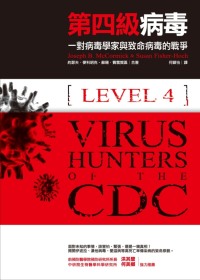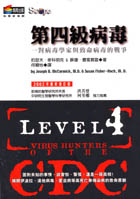Essential Family and Travelers’ Health | 生病了怎麼辦 - 2024年11月

Essential Family and Travelers’ Health
This book is unique.It is quite a challenging experience for families and travelers who have little guide;this book provides it.It is therefore a sine qua non for families and international travelers on vacation/holidays or business.The language has been simplified to meet this need. It should also be an important accompaniment for doctors of all grades with little exposure to Tropical Medicine and Public Health as well as for Medical Students and nurses who are bound to find this book to be very useful indeed. There is great emphasis about disease prevention especially by immunization, prevention of contact and breeding of mosquitoes, bite prevention, prophylaxis, basis and outline of management. The importance of disease prevention in travelers has equally been emphasized, exemplified by the recent outbreak of Ebola virus with potential for converting a regional disease to a pandemic.The book deals with the prevention of several infections and diseases especially with the ease provided by air travel which has has turned our world into "a small global village".The differential diagnosis of fever is one of the highlights of this book.Not many people know that they can still present with malaria after one year of returning from an endemic area.This book explains it in details. The origin of HIV is thrown into question;dates and chronology unveiled. Infections can be transmitted with the same speed of travel from Los Angeles to New York, London, Paris, Berlin, Moscow, Rome, Cairo, Lagos, Delhi, Sydney, Beijing, Tokyo etc.This will not happen if the traveler plans his journey carefully, gets immunized and takes into consideration the endemicity or prevalence of various infections throughout the different regions to be visited especially if it involves meeting with the local populations. This book contains the essential needs, types and immunization schedules. First doses of: diphtheria, tetanus, whooping cough, polio, haemophilus influenza b, pneumococcal disease, meningococcal B and rotavirus. Second doses of: diphtheria, tetanus, pertusis, polio, Hib, meningococcal C, rotavirus. Third doses of: diphtheria, tetanus, pertusis, polio, hib, meningococcal disease, hib/menC, pneumococcal disease, MMR live vaccine, influenza nasal spray, DTP, human papillovirus 16,18,6,11, meningoccocal 19, pneumovax, influenza annual, shingles, hepatitis b, BCG, men w. Chapter 2 is concerned with non-routine immunization-botulism, cholera, hepatitis, Japanese encephalitis, rabies, smallpox, tick-borne encephalitis, typhoid, chicken pox, herpes zoster, yellow fever. Chapter 3-Passive immunity, normal immunoglobulin, disease specific immunoglobulin, rhesus disease, anti D Rh immunoglobulin. Chapter 4 deals with disease prevention in international travel-malaria, tuberculosis, yellow fever, hepatitis A, B, C, E, typhoid, cholera, diphtheria, polio, Ebola virus, Japanese encephalitis, tick-borne encephalitis, Lassa fever, chickenpox, influenza virus, sexually transmitted diseases (which are fully dealt with in chapter five), measles, African Trypanosomiasis (Sleeping Sickness), Bird flu, dengue, hand, foot and mouth disease, leptospirosis, meningococcal disease, mumps, Murray Valley encephalitis virus, pneumococcal disease, rabies, Rift Valley fever, rubella, scabies, schistosomiasis, tetanus, West Nile virus, Middle East Respiratory Syndrome(MERS), Severe Acute Respiratory Syndrome (SARS), Zika Virus. Chapter 5 deals with sexually transmitted diseases-Chlamydia, genital warts, genital herpes, gonorrhoea, syphilis, HIV, trichomoniasis, pubic, lice, scabies, hepatitis B, Pelvic Inflammatory disease, lymphogranuloma venereum, chancroid molluscum contagiosum. Chapter 6 deals with Neglected Tropical Diseases-dengue, rabies, trachoma, Buruli ulcer, yaws, leprosy, Chaga's disease, Sleeping sickness, Leishmaniasis, taeniasis and neurocysticercosis, dracunliasis(guinea-worm disease), echinococcosis, food-borne trematodiasis, lymphatic filariasis, onch
 很熱的旅行
很熱的旅行 第四級病毒
第四級病毒 第四級病毒
第四級病毒 拉薩布達拉宮
拉薩布達拉宮 阿帕拉契的火:金車奇幻小說獎傑作選
阿帕拉契的火:金車奇幻小說獎傑作選 靈魂像風
靈魂像風 走吧,張小硯.圖文修訂版
走吧,張小硯.圖文修訂版 民族遺產(第一輯)
民族遺產(第一輯) 劫難:1947年春熱振事件
劫難:1947年春熱振事件 大威德之光:密宗大師熱羅傳記
大威德之光:密宗大師熱羅傳記